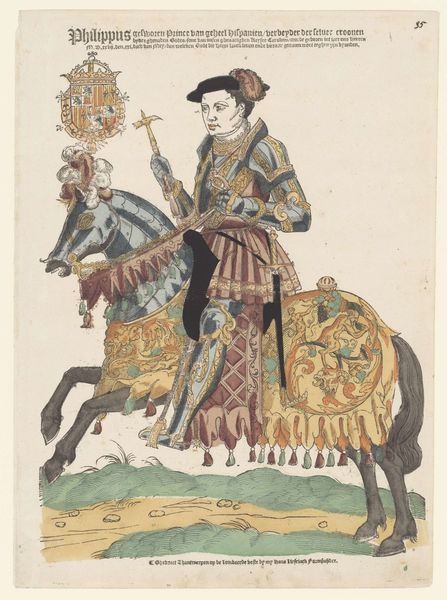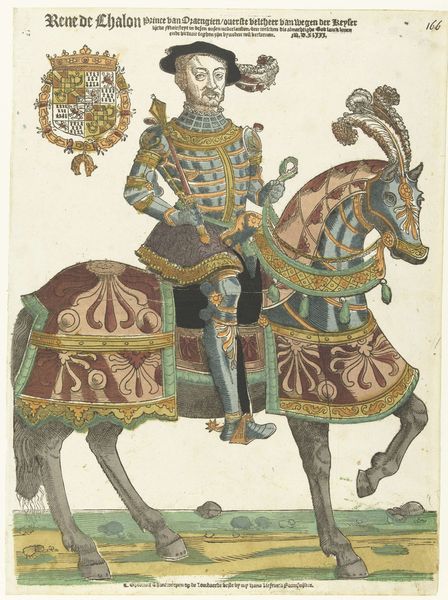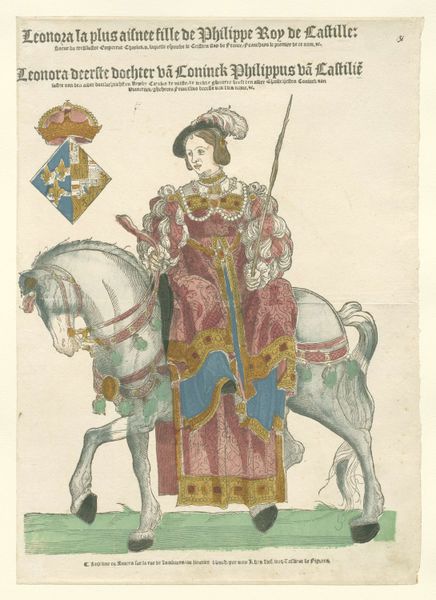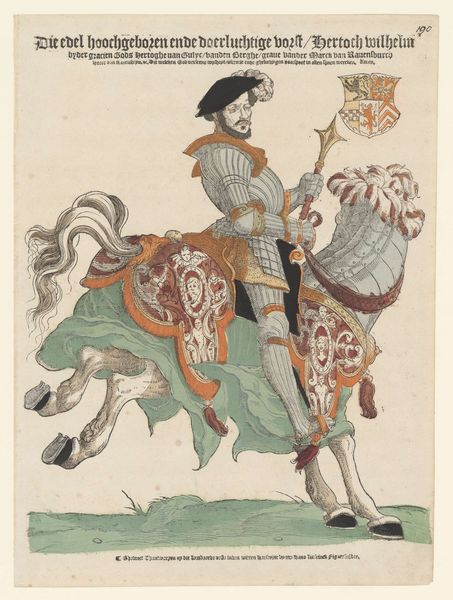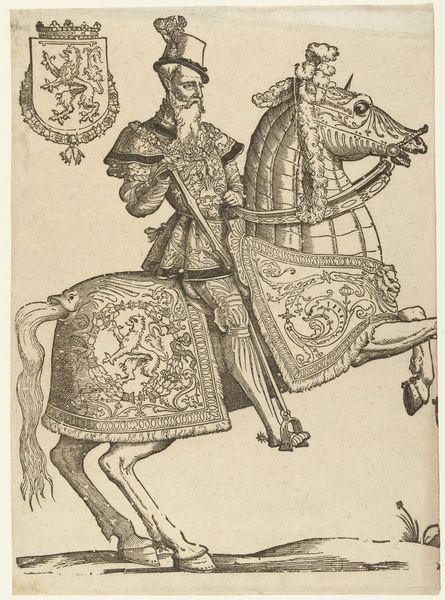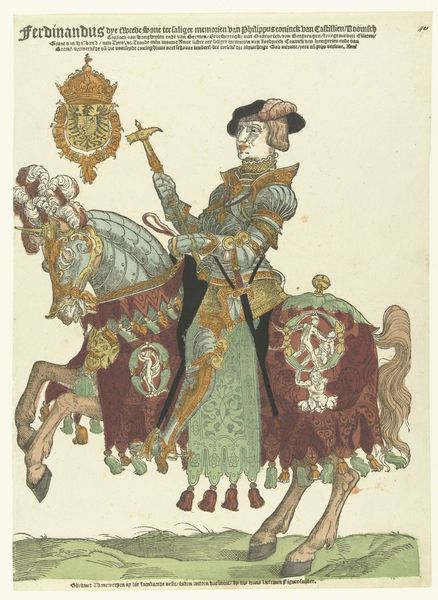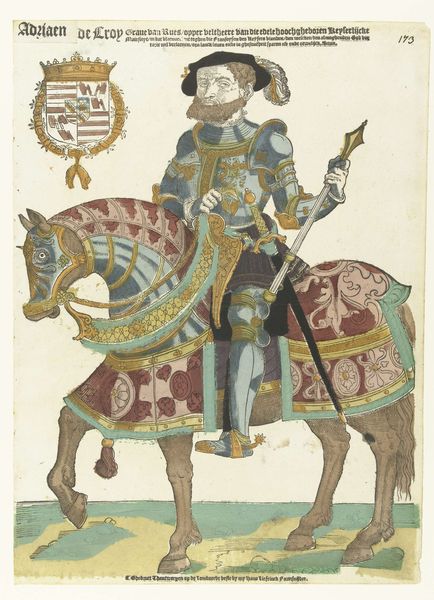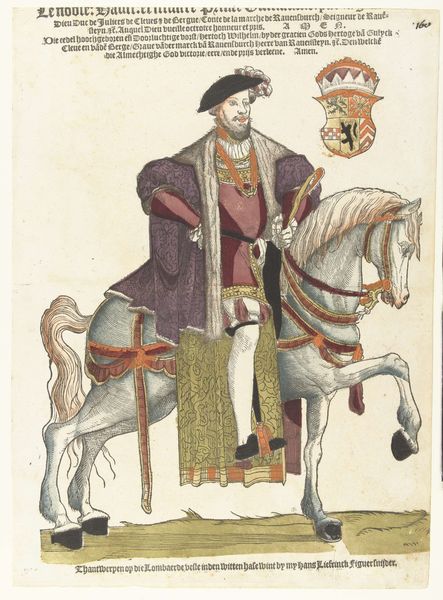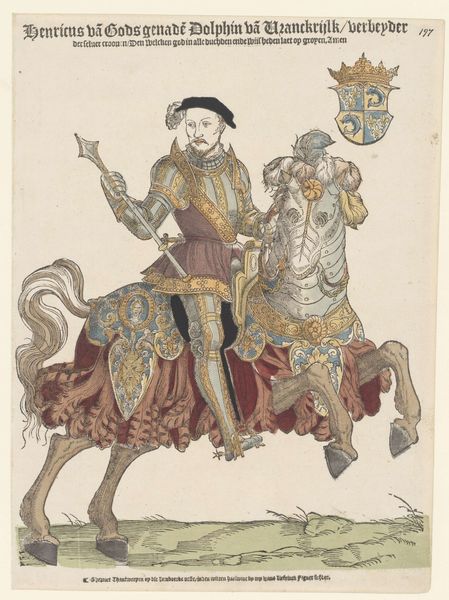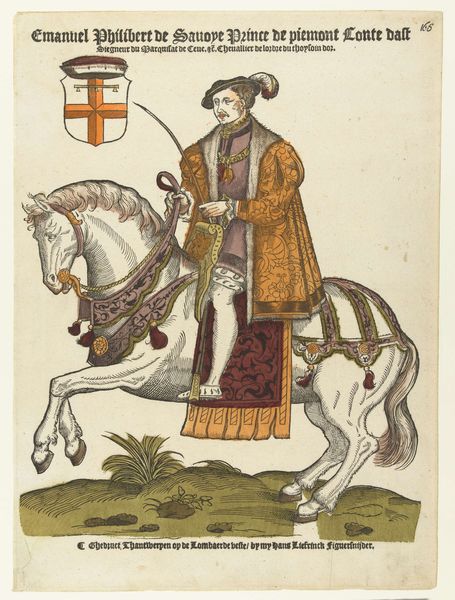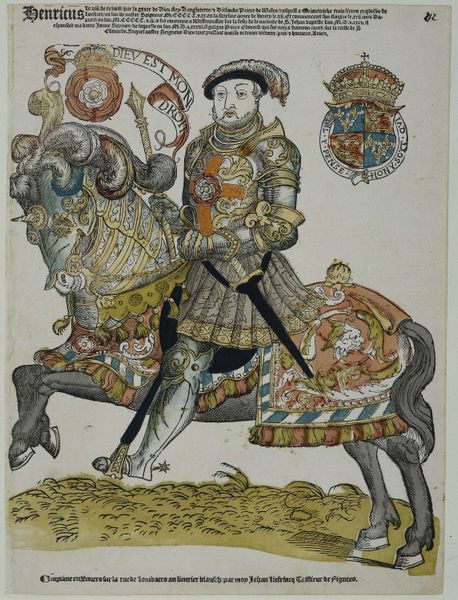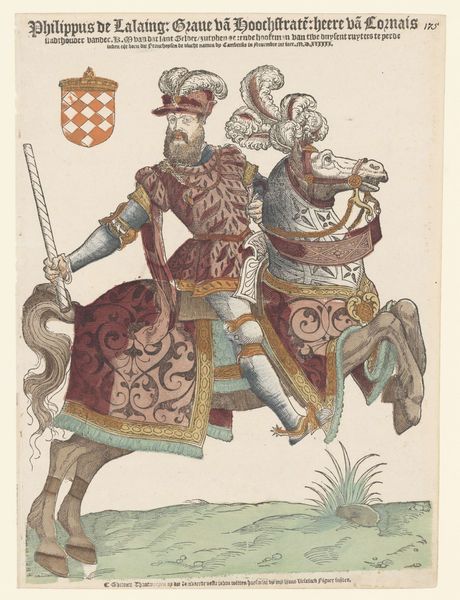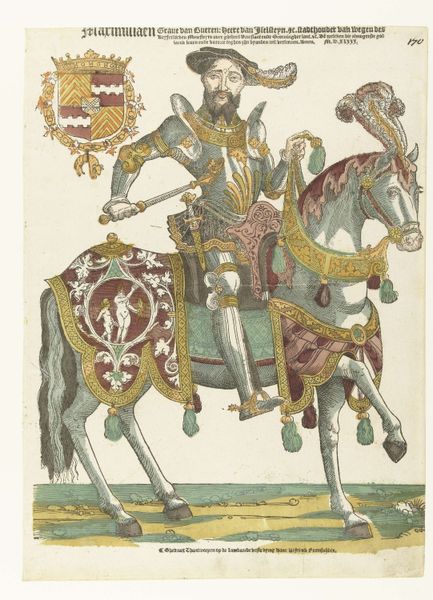
drawing, print, metal, oil-paint, paper
#
portrait
#
drawing
#
narrative-art
# print
#
metal
#
oil-paint
#
landscape
#
figuration
#
paper
#
form
#
11_renaissance
#
history-painting
#
northern-renaissance
Dimensions: height 405 mm, width 295 mm
Copyright: Rijks Museum: Open Domain
Curator: Just look at that horse! It's stiff, formal, but powerful. The whole scene evokes a kind of stilted pageantry. Editor: Today we're examining Cornelis Anthonisz.’s "Portrait of Charles of Orléans on Horseback," dating from around 1538 to 1545. The piece, residing here at the Rijksmuseum, seems to employ printmaking and drawing techniques, perhaps with a touch of oil paint, too. Curator: Absolutely. And see how the horse's regalia mirrors that of its rider? We see an echoing of symbolic motifs which communicate shared dominion, shared purpose, perhaps even a mirroring of destinies between the ruler and his dominion. Editor: I find it interesting how much effort went into depicting the horse’s coverings. There’s an intense focus on ornamentation and intricate details, almost like a textile design, and what looks like metal. I wonder if that says something about the patron's or artist’s emphasis on luxury goods as representations of power? The economic and social context here is impossible to ignore. Curator: Undeniably, there’s an intended power projection here. That hammer, also, becomes a key symbolic aspect: is it for judgement? Or construction, perhaps? The man clearly aimed at crafting an enduring self-image for those who would encounter the work. Editor: Crafting is definitely a central idea. We need to consider who actually *made* this print. It wasn't Charles of Orléans himself. So we should consider the labor that goes into making an image like this – the skilled artisans, the printing process, and all of those materials sourced. That human element in its production can not be discarded so easily. Curator: Indeed, tracing the evolution of power, presentation and selfhood through material culture offers a vital understanding of figures like this. It presents a view of 16th century values with considerable sophistication. Editor: The materiality and manufacturing point toward an artist acutely aware of their role in crafting lasting social and political narratives. And perhaps, the endurance of these printed images through time tells us a great deal more.
Comments
No comments
Be the first to comment and join the conversation on the ultimate creative platform.
